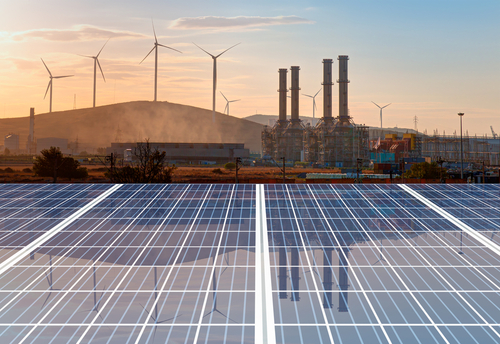New IEA renewables report forecasts huge growth to 2030
October 10, 2024

© Shutterstock
With solar leading their rapid deployment, renewables are on course to meet almost half of global electricity demand by the end of this decade, according to a new report released Wednesday by the International Energy Agency (IEA).
“Renewables are moving faster than national governments can set targets for. This is mainly driven not just by efforts to lower emissions or boost energy security — it’s increasingly because renewables today offer the cheapest option to add new power plants in almost all countries around the world,” said IEA Executive Director Fatih Birol. “This report shows that the growth of renewables, especially solar, will transform electricity systems across the globe this decade.”
The 177-page IEA report, entitled “Renewables 2024: Analysis and forecasts to 2030,” says that due to supportive policies and favorable economics, the world’s renewable power capacity is expected to surge over the rest of this decade, with global additions on course to roughly equal the current power capacity of China, the European Union (EU), India, and the United States combined.
The report, which is the IEA’s flagship annual publication on the renewables sector, found that the world is set to add more than 5,500 gigawatts (GW) of new renewable energy capacity between 2024 and 2030 — almost three times the increase seen between 2017 and 2023.
“Between now and 2030, the world is on course to add more than 5,500 gigawatts of renewable power capacity — roughly equal the current power capacity of China, the European Union, India and the United States combined,” Birol said. “By 2030, we expect renewables to be meeting half of global electricity demand.”
China is set to account for almost 60 percent of all renewable capacity installed worldwide between now and 2030, based on current market trends and today’s policy settings by governments, according to the report.
That would make China home to almost half of the world’s total renewable power capacity by the end of this decade, up from a share of a third in 2010, the IEA says, adding that while China is adding the biggest volumes of renewables, India is growing at the fastest rate among major economies.
In terms of technologies, solar PV is forecast to account for 80 percent of the growth in global renewable capacity between now and 2030, largely due to the construction of new large solar power plants, as well as an increase in rooftop solar installations by companies and households, says the report.
And despite ongoing challenges, the wind sector is also poised for a recovery, with the rate of expansion doubling between 2024 and 2030, compared with the period between 2017 and 2023, the report adds.
As a result of these trends, the IEA says that nearly 70 countries that collectively account for 80 percent of global renewable power capacity are poised to reach or surpass their current renewable ambitions for 2030.
Renewables also are on course to generate almost half of global electricity by 2030, with the share of wind and solar PV doubling to 30 percent, the forecast says, adding that governments need to ramp up their efforts to securely integrate variable renewable sources such as solar PV and wind into power systems.
The report also looks at the state of manufacturing for renewable technologies and says that global solar manufacturing capacity is expected to surpass 1,100 GW by the end of 2024, more than double projected demand.
While this supply glut, concentrated in China, has supported a decline in module prices — which have more than halved since early 2023 as a result — the IEA says that also means that many manufacturers are seeing large financial losses.
Search
RECENT PRESS RELEASES
Related Post




